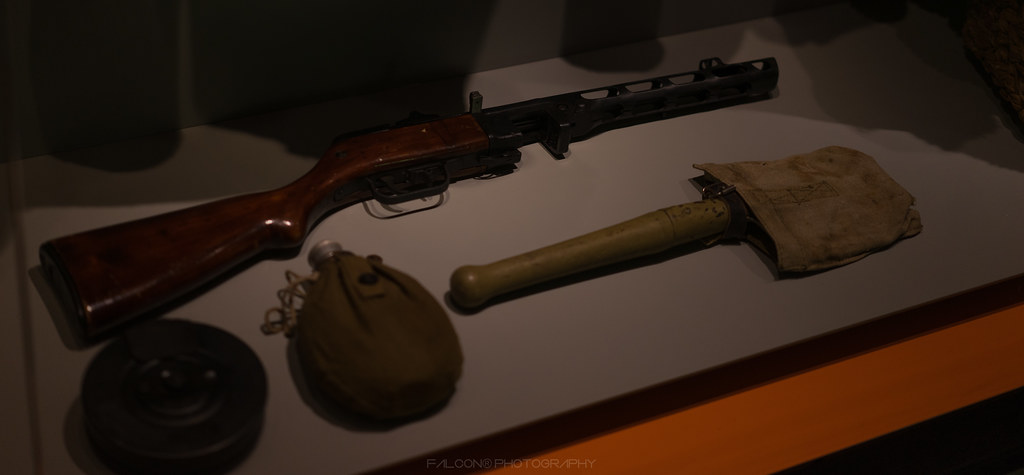
At the zenith of World War II, a distinct silhouette began to dominate the Eastern Front—its short, stubby barrel and large drum unmistakable. This was the PPSh-41, the Soviet Union’s staple submachine gun, a rugged masterpiece of mass production that played a pivotal role in infantry combat. As we analyze the enduring legacy of this iconic firearm, we grasp the profound impact it had on the tactics and fortunes of war.

The PPSh-41, fondly known as “Papasha” meaning ‘father’ among Soviet troops, emerged as a symbol of the Soviet war machine. Its development was necessitated by the desperate circumstances of the Winter War (1939-1940) against Finland. The Suomi submachine gun, utilized by the Finns, had demonstrated exceptional firepower effectiveness over short distances in forests and urban settings. Soviet troops lacked comparable weapons. Designed by Georgy Shpagin, the weapon that came into service in 1941 was brilliantly simplistic, lending itself to rapid mass production—a vital feature when the USSR’s very survival was at stake.

The weapon was designed to be as straightforward as possible, enabling it to be produced in small workshops or car repair shops with minimal training. It was a weapon borne out of necessity, with a stamped-metal body and a barrel that could be made from halved Mosin-Nagant rifle barrels. This ingenuity allowed the Soviet Union to equip entire platoons and even companies exclusively with this submachine gun, granting them superior firepower during close-quarter engagements.

In terms of combat efficacy, the PPSh-41 boasted a staggering rate of fire of up to 1000 rounds per minute and was effective up to 150 meters. Its large 71-round drum magazine gave Soviet soldiers the ability to lay down a relentless barrage of bullets, which proved particularly advantageous against the slower-firing bolt-action rifles wielded by German soldiers. Even the Germans recognized the PPSh-41’s superiority, rechambering captured units to accept 9mm Parabellum rounds and issuing them as the MP41(r).

The PPSh-41’s prevalence came to the fore during the brutal house-to-house fighting in the Battle of Stalingrad in 1942. It was here that the submachine gun’s full potential was realized; its compact design allowed soldiers to maneuver and fire in confined spaces, tipping the scales in close combat. PPSh submachine guns were also smuggled and airdropped to hundreds of thousands of partisans fighting behind German lines. They utilized these weapons to ambush German convoys and garrison units effectively.

The gun continued to be influential long after the war, with variants being manufactured and used by Soviet allies, including China and North Korea. The Korean War saw the PPSh-41 in the guise of the North Korean Type 49. The unique sound generated by the Type 49’s rapid rate of fire earned it the nickname “the burp gun” among UN forces.

The PPSh-41 underscores the Soviet Union’s capacity to respond with agility and resourcefulness in the direst hours of its history. The PPSH was produced on such a massive scale that the PPS never truly supplanted it. During World War II, over six million PPSHs were manufactured, while “only” around two million PPS43s were produced.
related images you might be interested.









